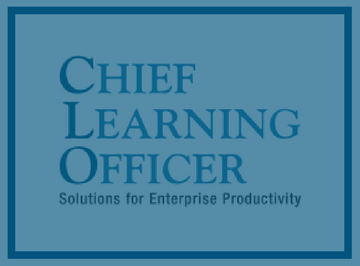High-Tech in Higher Ed
High-Tech in Higher Ed
Now that colleges have finally embraced online learning, there’s an interesting overlap happening between higher education and corporate learning. There are challenges, benefits and potential consequences to consider as the two partners compete. There are also questions to be answered:
- Do certain subjects lend themselves to classroom?
- Can you really teach soft skills online?
- What about the importance of student interaction?
- Who owns the content once a course is created?
- Should tuition for online programs cost the same as classroom ones?
These were harder questions to answer in the early 1990s. Back then, reporting was difficult, bandwidth was limited and not all students accepted learning technology. However, major advances in technology and culture have made most of the answers fairly obvious.
Now that higher ed is firmly committed to using online learning technology, the overlap with corporate training is only going to escalate. For instance, the explosion of Internet use and the ubiquity of broadband access have launched numerous possibilities. Devices pack so much processing power we can choose seamlessly between real-time streaming of video and downloading large files for access offline. These technological advances to online learning provide:
- Almost anytime, anywhere access to content.
- Constant connectivity to others.
- The ability to gather data and connect it back to students or instructors.
- Analytics to continually improve learning programs.
The cultural advances are just as significant. Learners of all ages are comfortable reading or viewing content online and access the Internet regularly. This ensures students will actively use online delivery mediums and may actually expand their interaction beyond instructional designers’ expectations.
The impact of the cultural change relating to online learning includes:
- Minimal need for direction on how to get started and what to do.
- Integrating class experiences with online social interactions to deepen engagement.
- Extending the classroom learning into the workplace is expected and more seamless.
- Blended learning models are accepted more readily.
Some higher ed institutions are still stuck with many of the same questions from 20 years ago, however.
Some people may be working with old information about what’s possible, or what’s actually happening in the online learning world. For instance, many are still stuck with the mindset of creating an analogous classroom experience online.
But online learning involves different conditions and experiences that enable learners to learn better, and in some cases more rapidly, and may require significant design and development efforts. Instead of attempting to limit online programs by forcing them into a classroom model, learning leaders should determine:
- What does online learning enable us to do differently or better?
- How do we leverage the opportunities to expand boundaries and access?
- How do we better leverage the new kind of engagement that social media enables for learning purposes?
- What are some new models for both content creation and ownership?
- How can we use big data and applications to minimize intrusion and still yield usable information?
When higher ed institutions entered the corporate learning world it changed the online learning landscape. Some of the areas to watch in the near-term are:
- Competition between schools with corporate training vendors.
- Shared development around cutting-edge content.
- Increased research into learning technologies, design, theory and adaptive artificial intelligence.
- Stronger ties between schools and companies related to talent for placement and recruiting.
- Philanthropic opportunities for corporations. For instance, the dedicated new building may be in virtual space.
- A change in how higher ed structures matriculation to align with the information age.

This column was originally published in CLO.